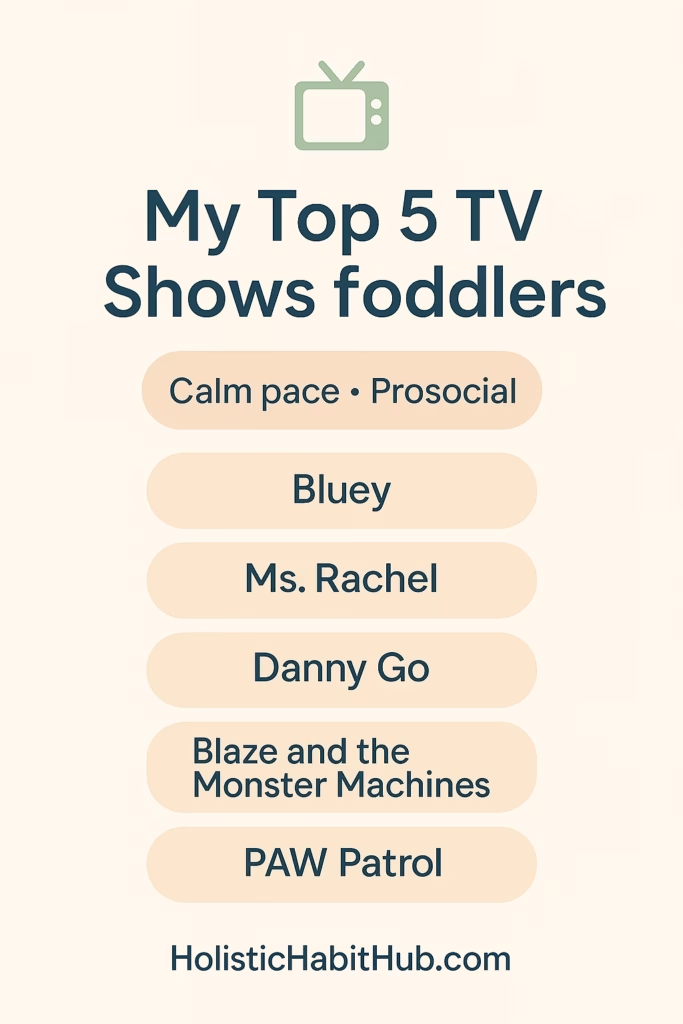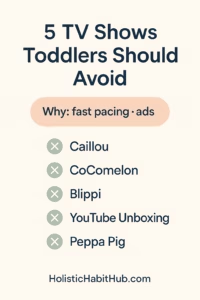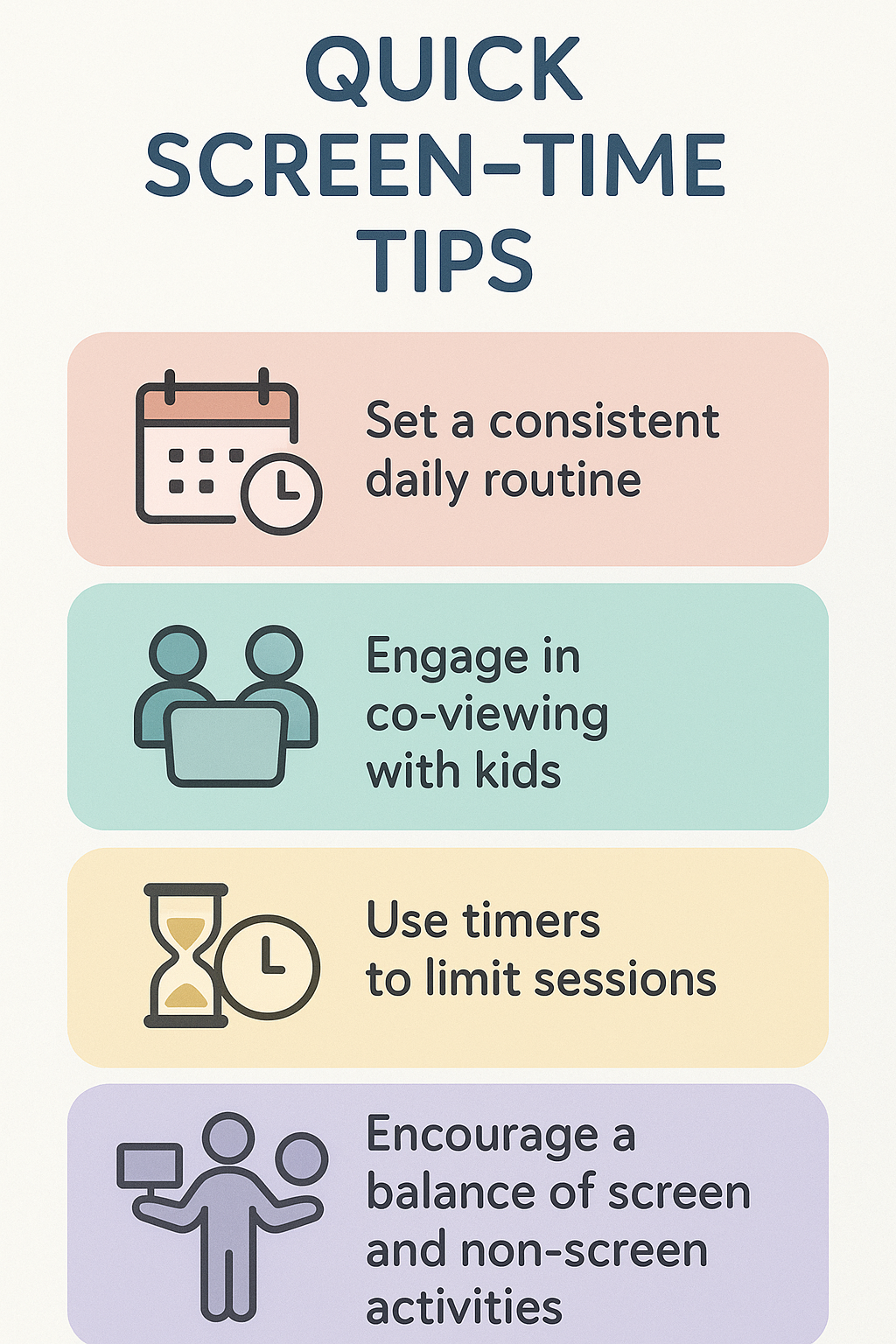Why Choosing the Right Shows Matters
Toddlers’ rapid brain development thrives on high-quality programming, making the choice of shows critical for their growth. Good and bad toddler shows can have very different impacts: calm, educational content supports language acquisition, social-emotional learning, and healthy attention spans, while fast-paced, overstimulating programs risk shortening focus and increasing irritability. By understanding which series provide valuable lessons and which to avoid, parents and caregivers can transform screen time into a mindful, enriching experience that nurtures young minds from the very start.
5 Good Toddler Shows
These programs use gentle pacing, simple plots, and positive messages.
-
Bluey
-
Follows a playful Australian puppy family.
-
Encourages problem-solving and empathy.
-
-
Ms. Rachel
-
Interactive songs and sign-language prompts.
-
Builds vocabulary through repetition.
-
-
Daniel Tiger’s Neighborhood
-
Focuses on “strategy songs” for managing emotions.
-
Reinforces social skills in each episode.
-
-
Blaze and the Monster Machines
-
Introduces basic STEM concepts like counting and shapes.
-
Steady pacing with clear explanations.
-
-
PAW Patrol
-
Teamwork and rescue missions teach cooperation.
-
Moderate pacing ideal for toddlers.
-
5 Bad Toddler Shows
These shows feature quick cuts, loud effects, or little educational value.
-
Caillou
-
Frequent whining scenes may reinforce negative behavior.
-
Repetitive plots offer limited learning.
-
-
CoComelon
-
Music-video style editing overwhelms young viewers.
-
Rapid scene changes hinder focus.
-
-
Blippi
-
Energetic jump-cuts distract from core lessons.
-
On-screen text and graphics are overstimulating.
-
-
YouTube Unboxing Videos
-
Unstructured pacing with constant novelty.
-
Offers minimal educational content.
-
-
Peppa Pig
-
Fast transitions and background effects can be too intense.
-
Emotional tone sometimes too dramatic for toddlers.
-
Quick Screen-Time Tips
-
Set a Routine: Limit sessions to 20–30 minutes at consistent times.
-
Co-View: Watch together and ask simple questions (“What did you learn?”).
-
Use Timers: Visual timers help toddlers understand start and end.
-
Balance Activities: Follow screen time with outdoor or hands-on play.
Simple Action Plan
| Step | Action |
|---|---|
| Choose Shows | Pick 2–3 from the “Good” list each week |
| Avoid Overstimulation | Skip “Bad” list during prime attention hours |
| Track Viewing | Use a checklist or printable tracker |
| Engage & Discuss | Pause to talk about characters and feelings |
Join the Conversation
We’d love to hear from you! Share your toddler’s favorite good and bad toddler shows using #HolisticHabitHub on social media. Tell us which series your little one can’t get enough of—and which ones you’ve happily swapped out. Your real-life tips and experiences help other families choose screen time that supports growth and calm.
Feeling overwhelmed as a parent? Discover simple ways to recharge in minutes with The 5-Minute Reset: Micro Mindfulness for Overwhelmed Parents.
Pro tip: a visual timer, like the LIORQUE Visual Timer, makes transitions smoother—its clear, colored disk helps toddlers see how much screen time remains and prevents tantrums at “time’s up.” Share your success stories using #HolisticHabitHub!

Pingback: The Benefits of Co-Watching with Your Toddler - holistichabithub.com